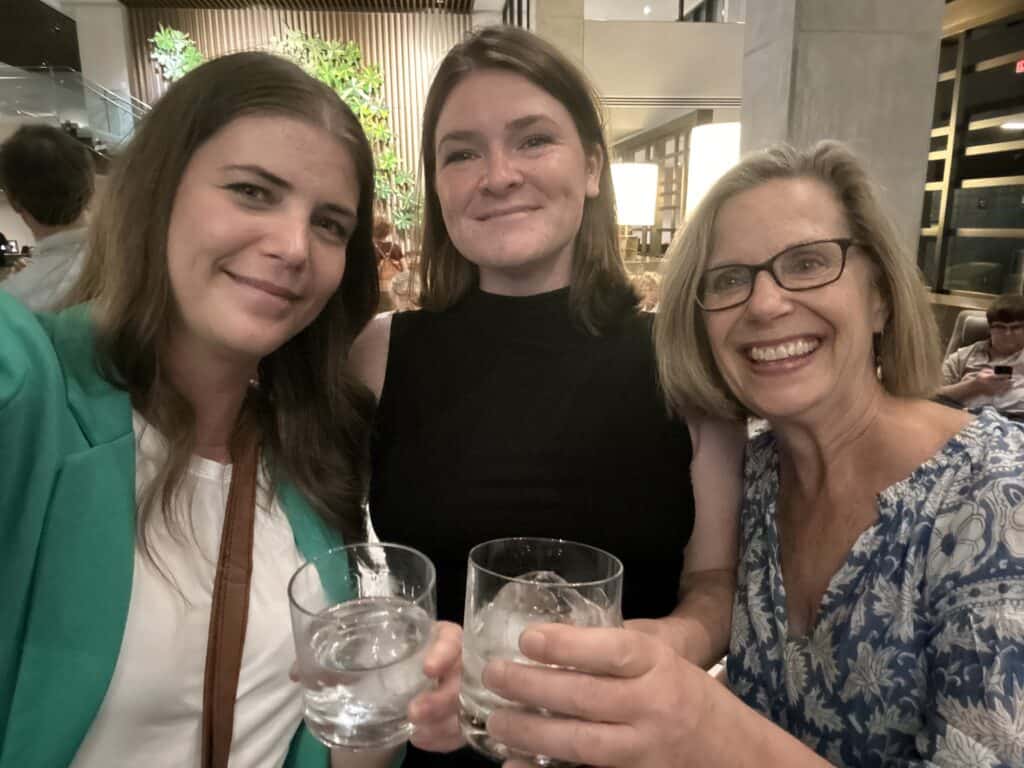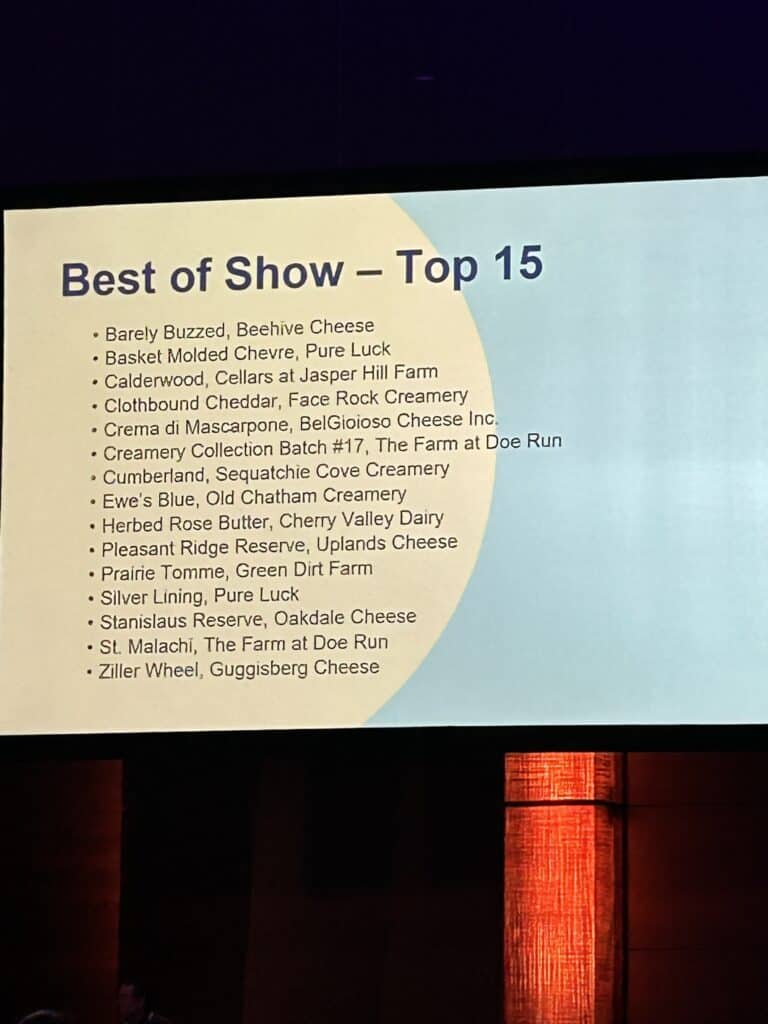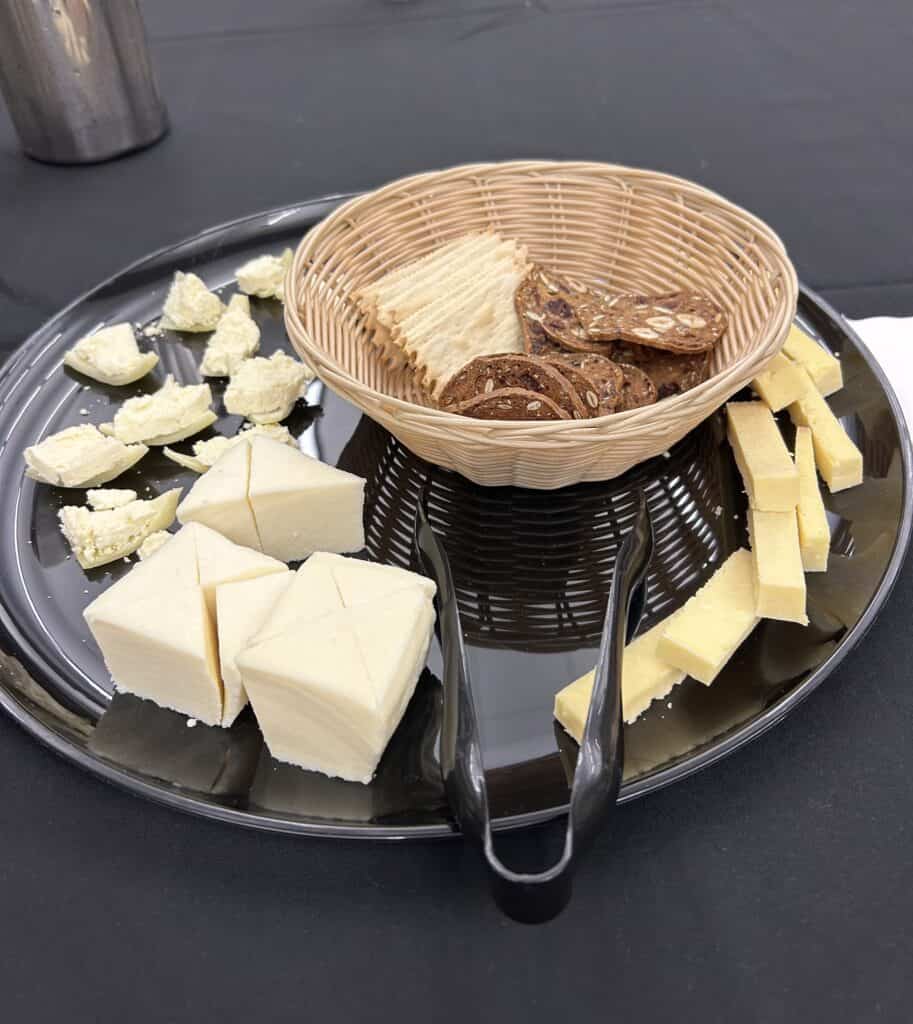
The culture team is still on a high from last week’s American Cheese Society Conference in Des Moines, Iowa. The annual event, affectionately dubbed “Cheese Camp” was themed “40 Years of Cheese” in celebration of ACS’ four decades of history. While the announcement of the ACS Judging and Competition winners on Wednesday night was certainly a high note, there is more to this well-orchestrated gathering of the cheese community than awards.
In the Welcome Session, Dr. Paul Kindstedt of the University of Vermont warned that “a coalition of activist groups, special interest groups, and commercial enterprises” are using social issues to move young people away from dairy products. The anti-dairy narrative advanced by the plant-based community is “one-sided, unbalanced, and woefully incomplete,” he said, adding that “milk has been designed by nature to enhance the survival of mammals.” The “Why Cheese from Milk” talk was a reprise of the Discover Conference, co-sponsored by the ACS and the American Dairy Science Association, which was all about “merging cutting-edge science with messaging that can win over the public,” said Kindstedt.
“I noticed an overall change in the sentiment toward talking about vegan cheese,” says Digital and Social Media Editor Josie Krogh. “Last year, vegan ‘cheese’ was talked in whispers and on one panel, with people saying it has no place in ACS discussions. This year, the vegan movement was the topic of the opening speech. I heard many people mention the ‘war on dairy,’ and while that may be a strong way to phrase it, I do think it’s incredibly important to be aware of the information coming at consumers so we can ensure a future for real, animal-based dairy.”
We had a rare opportunity to learn about and taste four traditional Mexican cheeses at two sessions hosted by Jessica Fernández Lopez of Mexican Mongers, Georgina Yescas Ángeles Trujano of Lactography in Mexico City, and Dr. Aarón González-Cordóva, of Mexico’s Centro de Investigación en Alimentación Desarollo. They explained the history of cheese in Mexico, which dates to the Spanish colonization, and that it was difficult to introduce cheese into the community/society because milk wasn’t a part of the Mexican diet. Many Mexican cheeses, such as Adobera, are quesos frescos made from cow’s milk and often melted into quesadillas—a national comfort food. Bola de Ocosingo, one of two of the cheeses we tried with a Collective Trademark (similar to a PDO), is molded in a cheesecloth bag that hung for 15 days, then kneaded and rehung. The outside of the bola, or ball, is edible, but hard and wax like; inside the crumbly, dense, double-cream cheese has notes of tropical fruit. Real Mexican cotija is quite different from the versions we find in the U.S. Made in the hard-to-access Michoacán mountains with raw cow’s milk and traditional rennet, this cheese is butter yellow with a distinct salty tang reminiscent of pecorino. “It is one of the most smuggled cheeses into the U.S.,” said Lopez.
None of the above cheeses are available stateside, but Lopez, Trujano, and González-Cordóva are determined to change that. “We are working on improving the impression that Mexican cheese isn’t safe,” said Lopez. We want to be acknowledged for the high standards that exist in the majority of Mexican cheesemaking facilities.”
The wide range of sessions covered technical topics, cheesemaking creativity and exploration, and the some of the issues facing those who work in the cheese industry.
Creative Director Mallory Scyphers shared with us her takeaways from DEI – Recruitment, Retention and Unconscious Bias, co-hosted by Christina Chang of Whole Foods Market, Felicia Rivers of Tillamook County Creamery Association, and Emi Lee of North Coast Food Co-Op. These included:
- TEND: Truth (speak your truth), Engage (consciously listen), Non-Closure (be okay with open ended conversations), Discomfort (settle into the discomfort)
- Ask yourself not why a candidate is a bad “fit”, but what would their “culture add” bring to your organization.
- Acknowledge biases and actively work to move past them.
- Have a diversity statement for your company, and ask potential candidates what diversity means to them.
- Consider adding a scoring system to candidate reviews to remove any bias surrounding particular candidates.
“Wages, working conditions, and mental health seemed to be an undercurrent in so many panels and conversations,” says Krogh. “I was particularly moved by Dan Utano’s comments on the ‘Battling Burnout & Developing Healthy Coping Mechanisms’ panel. Listening to Dan’s story was intense—I found myself feeling a little nauseous listening to what he’d gone through. Not because they were so egregious, but because I had experienced so many of the exact same things. There seems to be a high burnout rate in this industry, with many people feeling underpaid and overworked, so I was thrilled to see this being talked about on a large stage and hope that conversations continue to move out from the shadows and into the forefront.”

On a lighter note, Scyphers and I attended a session on flavored cheeses titled “You Put WHAT in My Cheese?” Co-hosted by Sue Miller of Pennsylvania’s Birchrun Hills Farm, Oliver Ford of Utah’s Beehive Cheese, and Chris Gentine of Deer Creek Cheese in Wisconsin, this session offered a look at the different and effective ways to add flavor to cheese. For her Mushroom Little Chardy, Miller sandwiches savory local mushroom duxelle into her Little Chardy triple cream square for a hyper-regional holiday treat. We also tasted coffee and lavender-rubbed Barely Buzzed—the cheese that put Beehive on the map—and Rum Raisin, which cheeses, has the flavors blended into the paste. Gentine presented his herbaceous, chartreuse-soaked Moon Rabbit, and Blue Jay, an exceptionally creamy blue infused with juniper berries, as examples of other flavor-enhancing techniques.
“Cross-merchandising and education connection” was the serious purpose behind an lively session on pairing cheese with mocktails. Co-hosted by friends Julia Birnbaum, founder of the Philly Cheese School, and Samantha Kane of Fever Tree, this information-packed session offered lots of real-world ideas for retailers. “The mocktail pairing class was super engaging!,” says Krogh. “I liked seeing their profit breakdown and practical suggestions for how a cheese shop could adopt this model to increase revenue.”
In the media briefing on the morning following the awards ceremony, we had the opportunity to hear from the three Best of Show winners. First place Best of Show winner Oliver Haver of The Farm at Doe Run almost didn’t attend the conference; her decision to fly from Pennsylvania to Iowa at the last minute was a relief to conference organizers. The winning cheese, St. Malachi, is a farmstead Alpine-style/gouda wheel made milk of just 20 Jersey and Normandy cows. Not only was there none of it at the conference, but Haver and her assistant affineur had to fly right back to the farm to turn the wheels. Asked what she planned to do with the opportunity—which is like winning an Oscar for cheese—Haver said she had no plans to increase production. “I want to use it to promote artisan cheese made with thoughtfulness and care,” she said.
Second Place Best of Show went to Cumberland, a tomme-style cheese from Sequatchie Cove Creamery in Tennessee. Padgett Arnold, who co-owns the creamery with her husband and head cheesemaker, Nathan, said that Cumberland—the original of the creameries four cheeses—was inspired by Tomme de Savoie, made in the Alpine region of France. “We are at a much lower altitude, but there are some similarities geologically in the Cumberland section of the Appalachian,” she said. A recent renovation of the make room and all new equipment will give the Arnolds the ability to double their batch side.
Finally, we heard from Andy Hatch of Upland’s Cheese in Wisconsin, whose Pleasant Ridge Reserve tied for Third Place Best of Show with Prairie Tomme from Missouri’s Green Dirt Farm and Basket-Molded Chevre from Pure Luck Farm in Texas. “It struck me at the end of the ceremony that of all the independent cheesemakers standing on stage, most of them were women,” Hatch said. Pleasant Ridge Reserve has the distinction of being the most-awarded cheese in American history, having won ACS First Place Best of Show three times, as well as the US Cheese Championships—the only U.S. cheese to have won both competitions. Hatch said that climate change has caused him to think about building a new barn in the next couple of years for his cows, which now graze exclusively outside during milking season. He’s also considering offering improved access to the farm, citing the agritourism opportunities pioneered by wineries. “If we can make the numbers work we want to do a better job interacting with the public, for both increased revenue and growing the market.”







